The internet never forgets… unless the page vanishes, the site goes offline, or the content quietly changes overnight.
That’s where web archiving tools come in. They allow you to access saved versions of web pages, even if they get taken offline.
The Wayback Machine is the best-known option, but it isn’t perfect—it’s slow, sometimes misses snapshots, and doesn’t offer much customization.
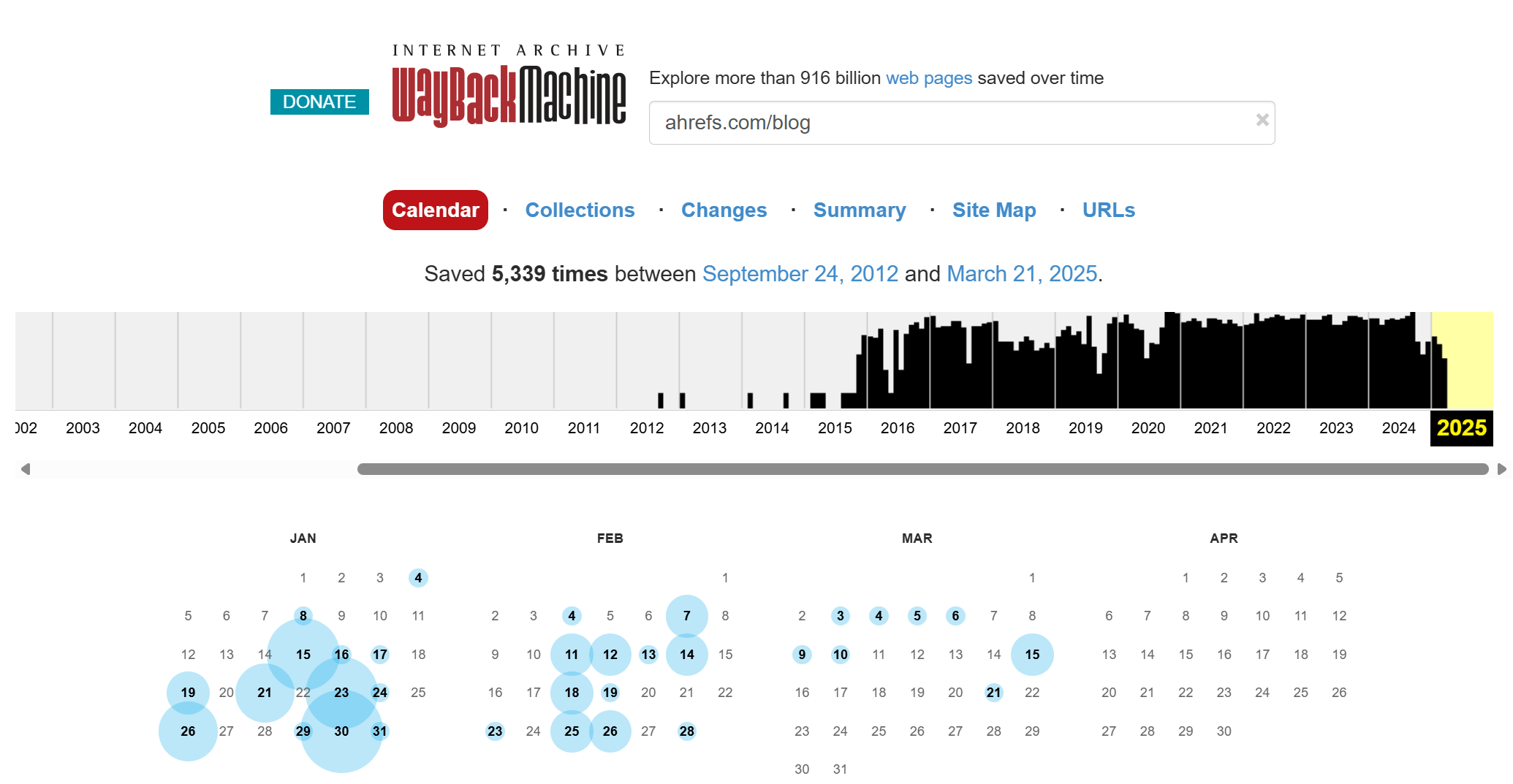
I’ve tested half a dozen web archiving tools over the years. Here are the best Wayback Machine alternatives I’ve found—each with its own strengths, depending on what you’re trying to do.
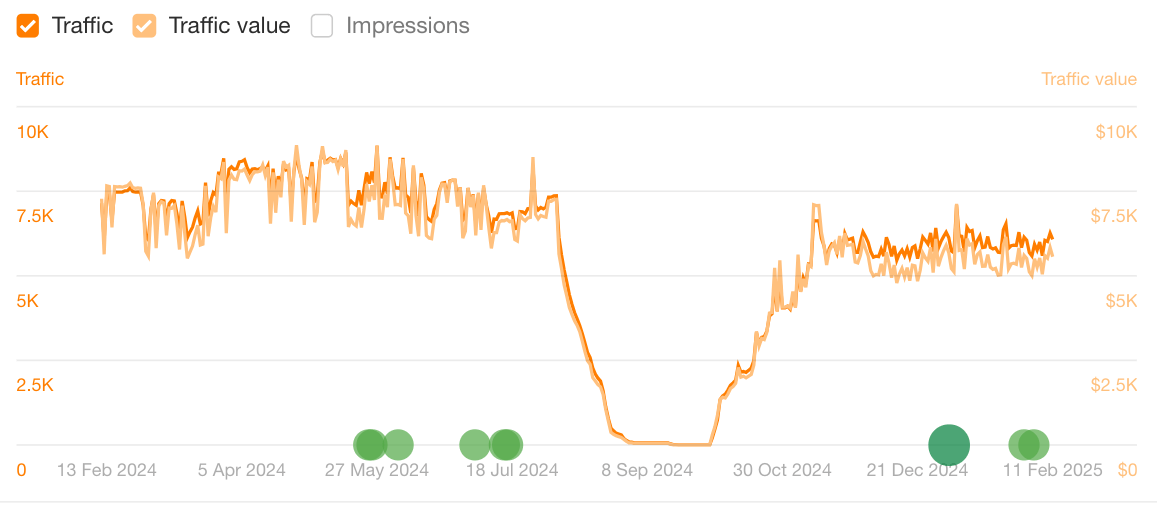
(If you’re in this situation, check out our full guide on how to diagnose traffic drops: How to Analyze a Sudden Traffic Drop.)

You can toggle between text and HTML modes, with the option to beautify the HTML for better legibility:
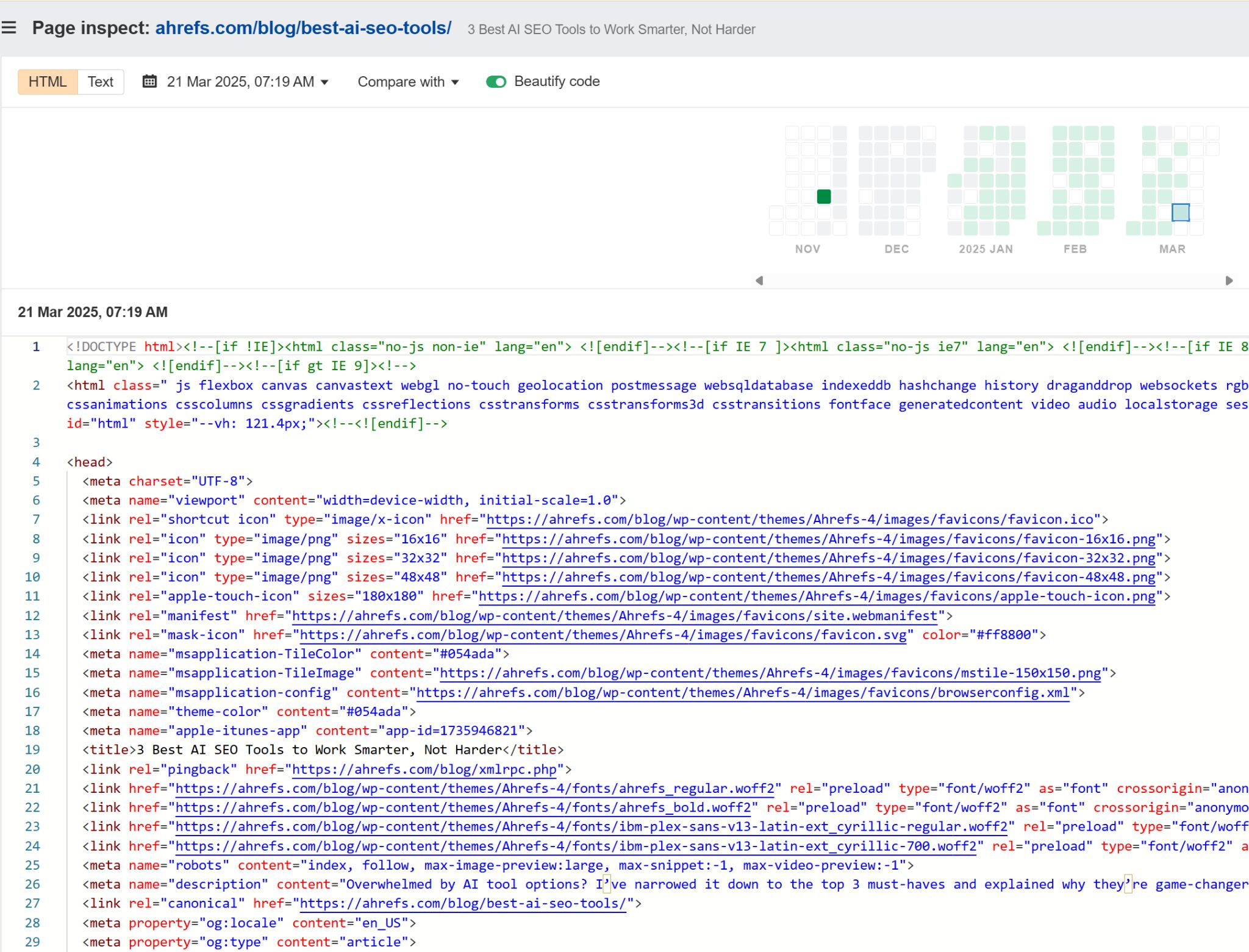
And, like a diffchecker, you can compare any two page versions to see the changes that happened, like this before and after of my update to our keyword research guide:
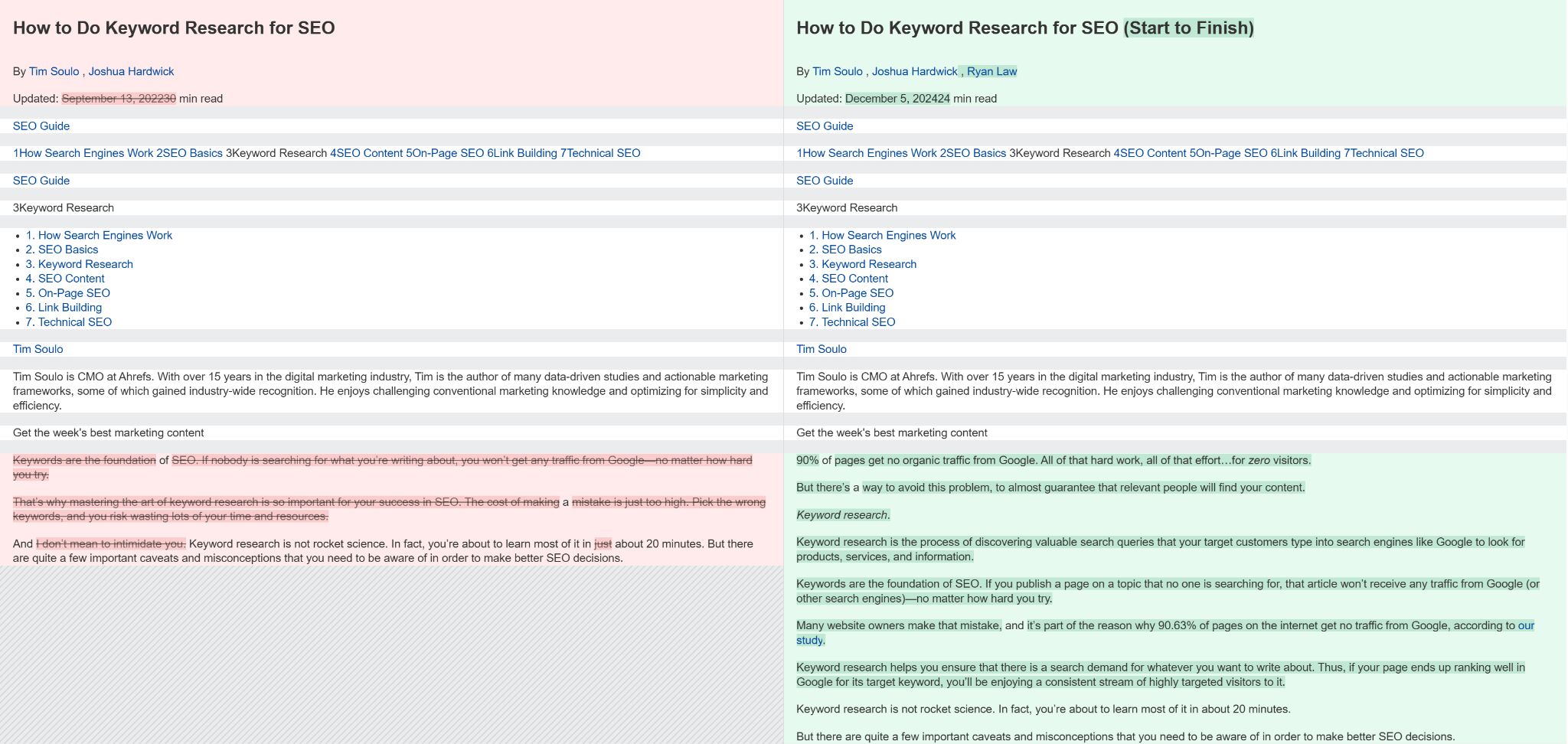
It also shows how those changes correlate with organic traffic and ranking shifts. SEOs and content strategists use it to diagnose traffic drops, identify content decay, and analyze competitor changes. What makes it unique is how it blends page archiving, diffchecking, and SEO data—so you can actually see how content edits impact search performance.
Learn more: https://ahrefs.com/academy/how-to-use-ahrefs/site-explorer/page-inspect
archive.today–for quick, anonymous archiving
Archive.today is a free, no-login tool that lets you capture a web page instantly and store it on its own domain.
It’s a favorite for researchers, journalists, or anyone who wants to preserve a web page before it disappears. The tool is incredibly fast and supports complex, JavaScript-heavy pages better than most public archives.
It’s a great choice for saving a page before it disappears, but it’s not the best for finding a webpage after it’s disappeared, because it relies on someone manually triggering the capture. Case in point: the latest shanpshot for the Ahrefs blog is from 2016.
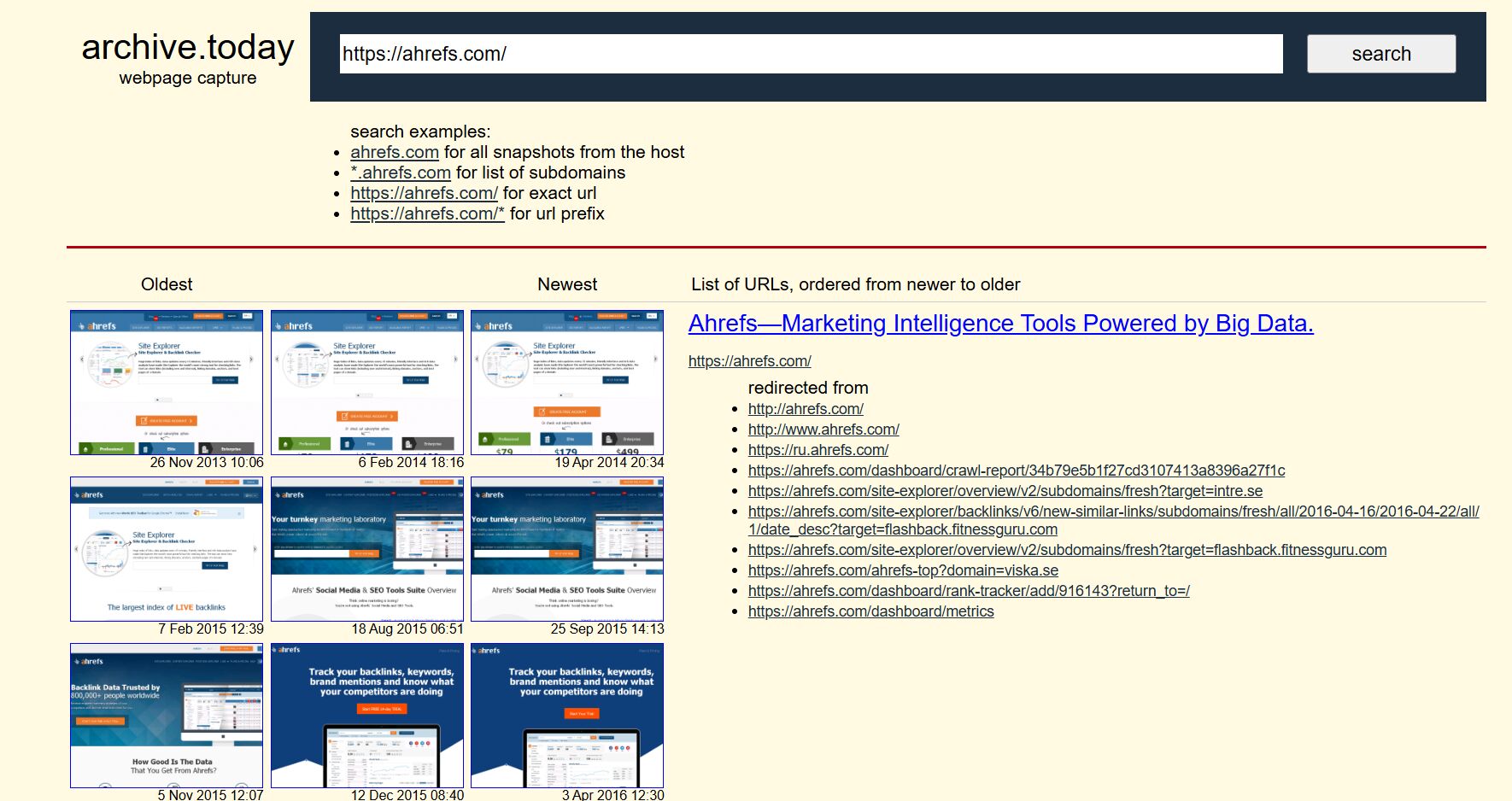
Learn more: https://archive.ph. Free to use, no registration required.
Stillio–for marketers, compliance teams, and brand monitors
Stillio is a paid web archiving service that captures automated screenshots of web pages on a schedule—daily, weekly, or customized to your needs.
Marketing teams use it to track A/B tests and page updates. Legal and compliance teams rely on it to ensure ad and regulatory compliance.
Its standout feature is automated snapshot scheduling with useful integrations like Dropbox and Google Drive.
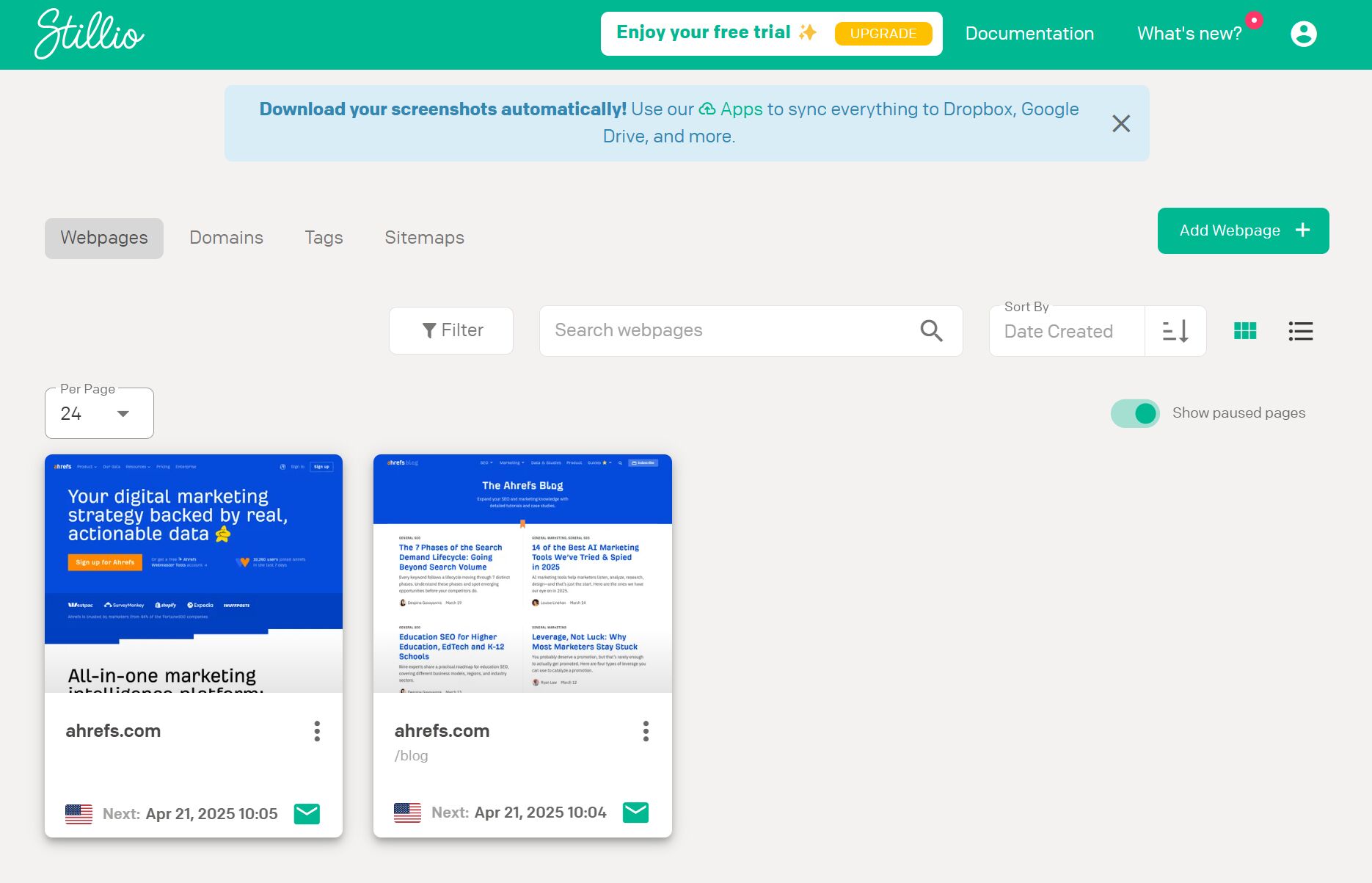
Learn more: https://www.stillio.com. Starts at $29/month for 5 URLs.
Perma.cc–for legal teams, academics, and journalists
Perma.cc was built by Harvard Law School to fight link rot in scholarly and legal contexts. It allows users to create permanent, time-stamped records of web pages that are stored by a consortium of libraries.
Legal professionals, journalists, and researchers rely on it when they need immutable citations for court filings, academic references, or public records. Its standout feature is the ability to generate tamper-evident, permanent archive links that are widely trusted by legal and academic institutions.
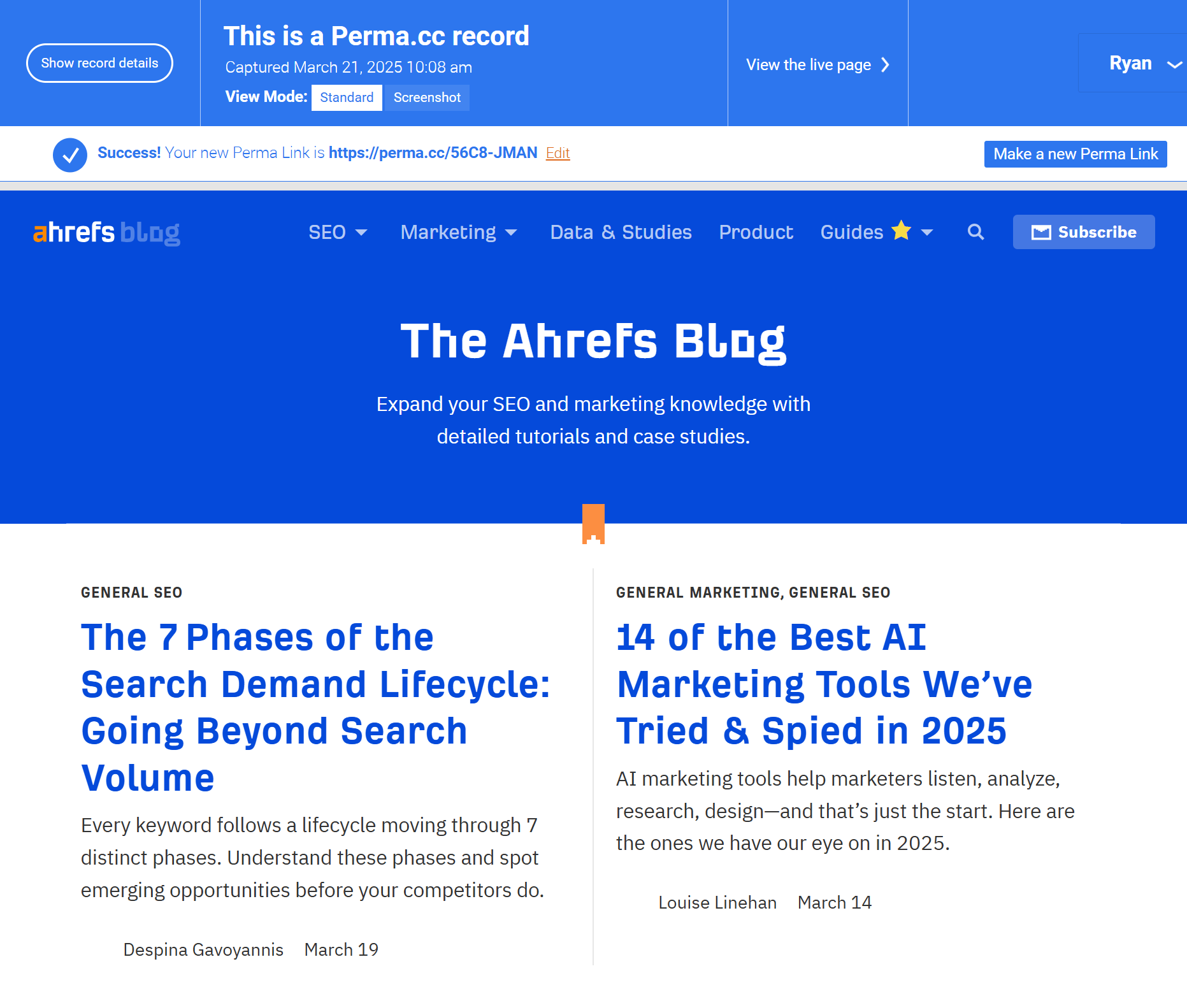
Learn more: https://perma.cc. Free for academic use, with paid plans available for institutions and individuals.
Pagefreezer–for enterprises with legal or regulatory requirements
Pagefreezer is an enterprise-grade archiving platform designed for industries that require secure, compliant records of websites and digital communications.
Governments, banks, insurance firms, and healthcare providers use it to maintain legally admissible records of online content and social media. It stands out with its support for legal holds, audit trails, and exportable archives—key features for audits and litigation.
It’s expensive, but if you have these kinds of enterprise-sized problems to solve, hopefully you’ll have an enterprise -sized budget to match.
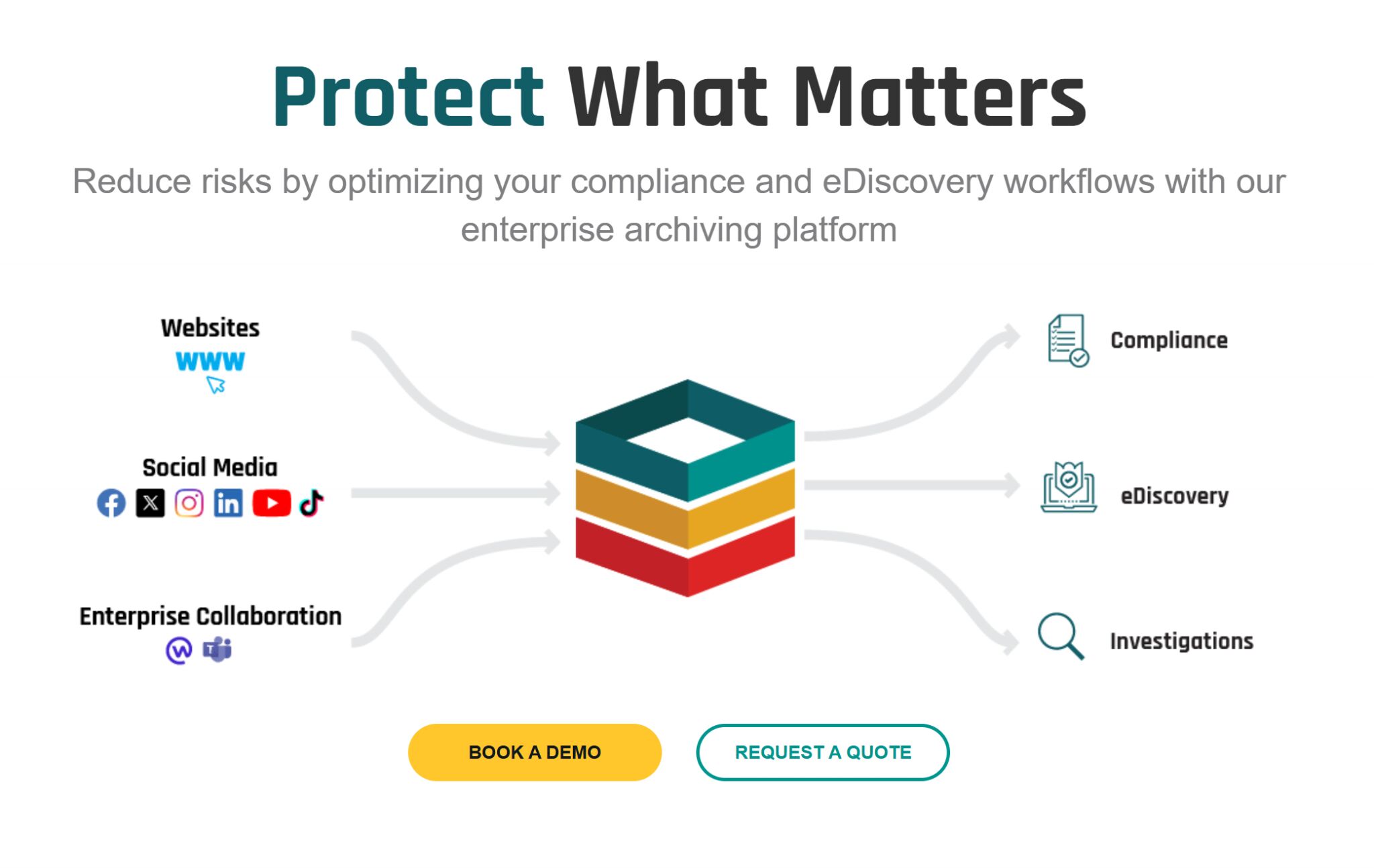
I don’t have a screenshot of me using this service because, let’s face it, I can’t afford it.
Learn more: https://www.pagefreezer.com. Pricing by quote only.
Memento Project–for researchers and digital historians
The Memento Project is a federated tool that connects multiple web archives—like Wayback, Archive.today, and others—and lets users “time travel” across archived versions of a URL. It’s especially useful for historians, academics, and journalists conducting deep research into how web content has evolved over time.
Its most compelling feature is archive aggregation: you’re not limited to one platform’s coverage, and can browse across multiple archiving services in one place.
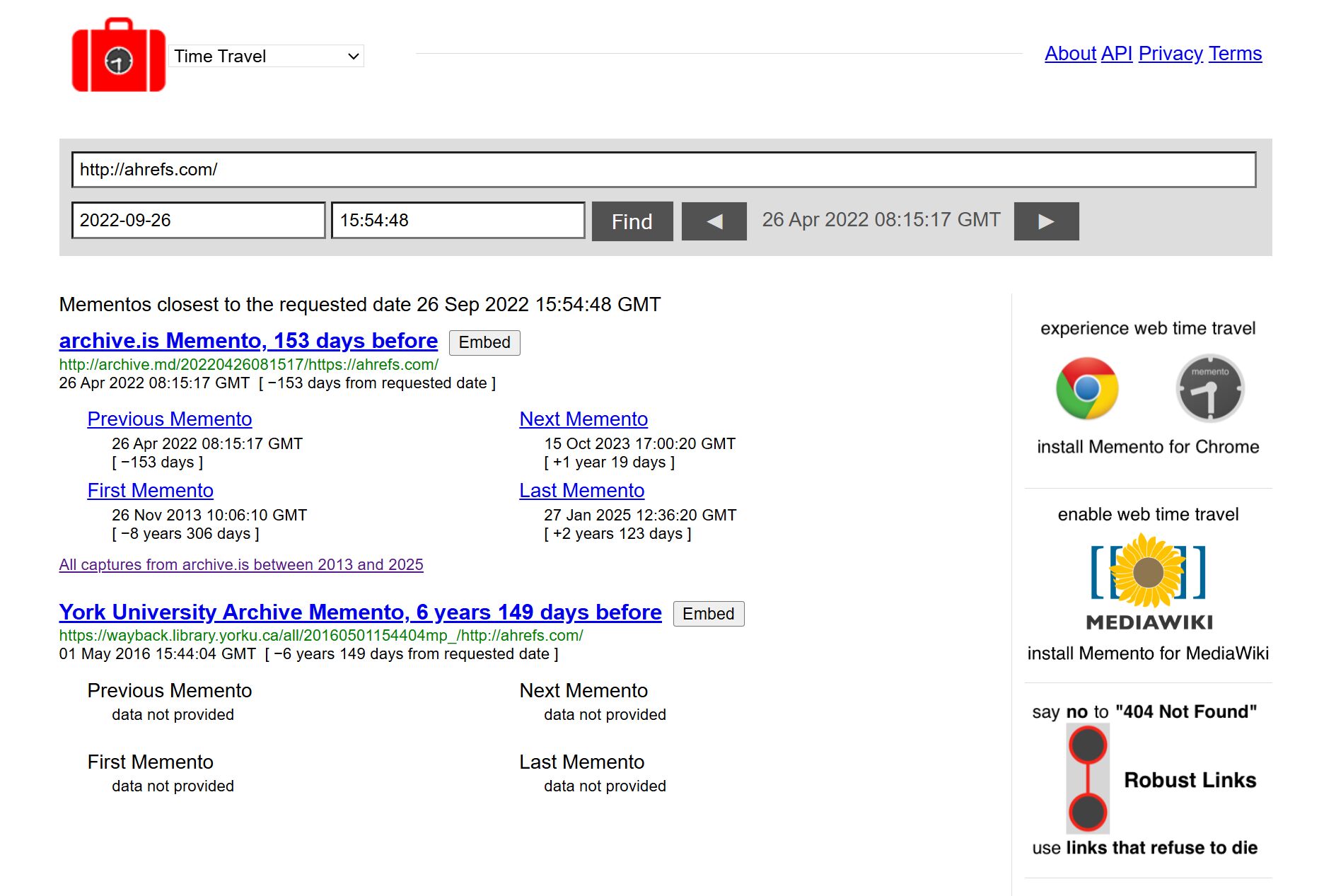
Learn more: http://timetravel.mementoweb.org. Free and open to the public.
Webrecorder and GitHub–for developers and DIY archivists
Webrecorder is an open-source tool that lets you build interactive, high-fidelity archives of websites, especially those that rely heavily on JavaScript.
Developers and digital preservationists use it when they need precise control over how a page is captured and stored. You can even record dynamic user sessions for full playback—a level of fidelity public archives often can’t match. GitHub is commonly used to store or share these archives.
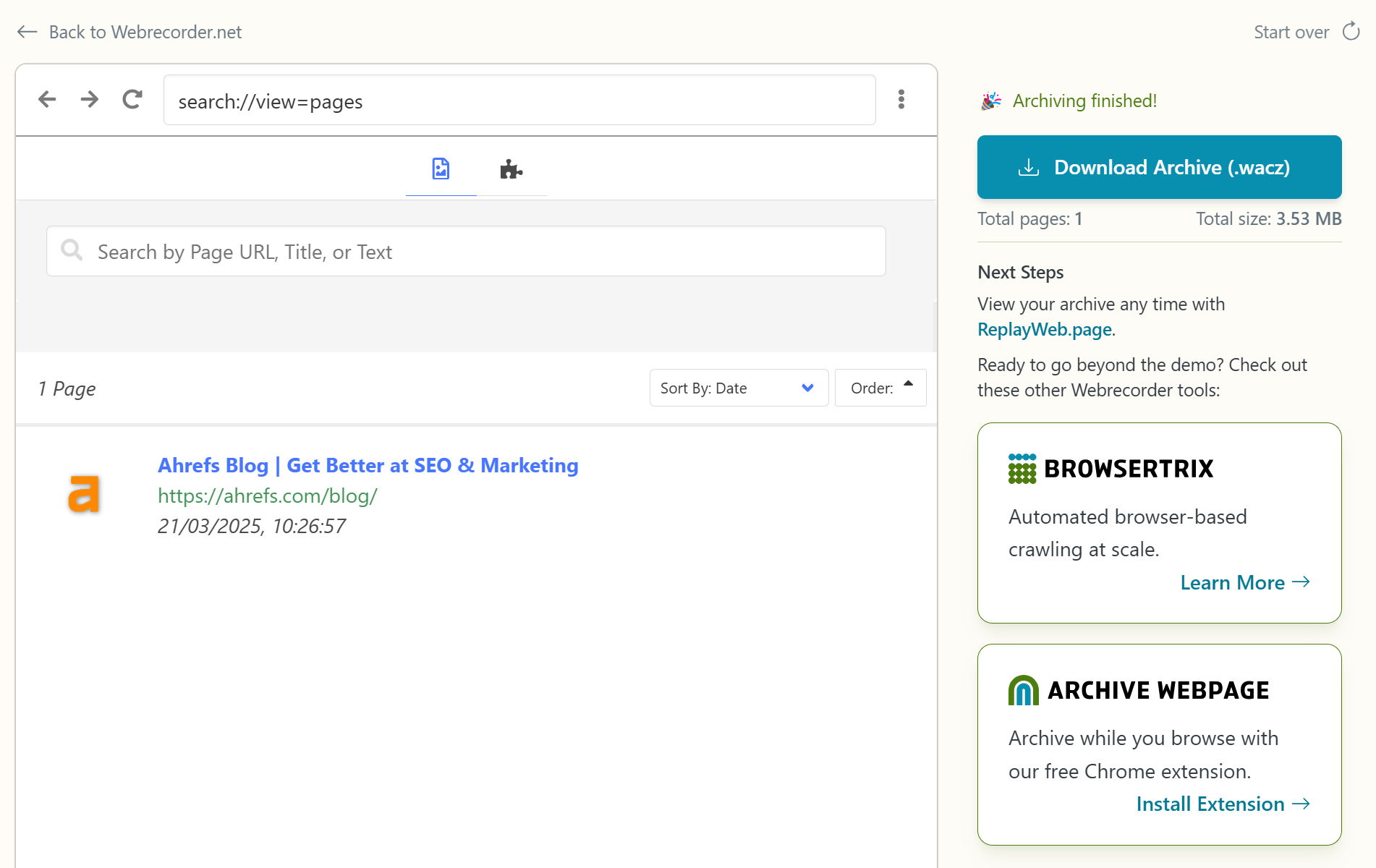
Learn more: https://webrecorder.net. Free and open-source.
If you’re an SEO and you’ve ever wished the Wayback Machine could show why a traffic drop happened—not just when a page changed—give Ahrefs’ Page Inspect a try. It connects historical page content with search performance, helping you spot exactly what went wrong (or right).
Similar Posts
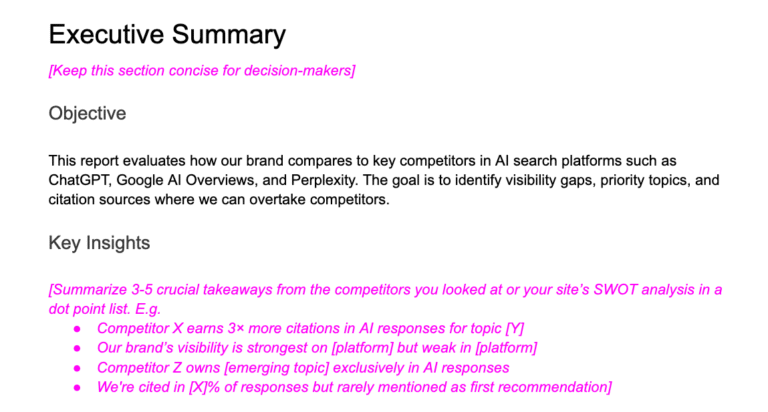
How to Compare Your AI Visibility Against Your Competitors
If a competitor is mentioned more often, cited more frequently, or framed more favorably in AI answers, they win attention and trust before searchers even know you exist. This guide shows you how to run an AI search competitor analysis that reveals: Which brands in your industry dominate AI search today Where your competitors earn visibility,…
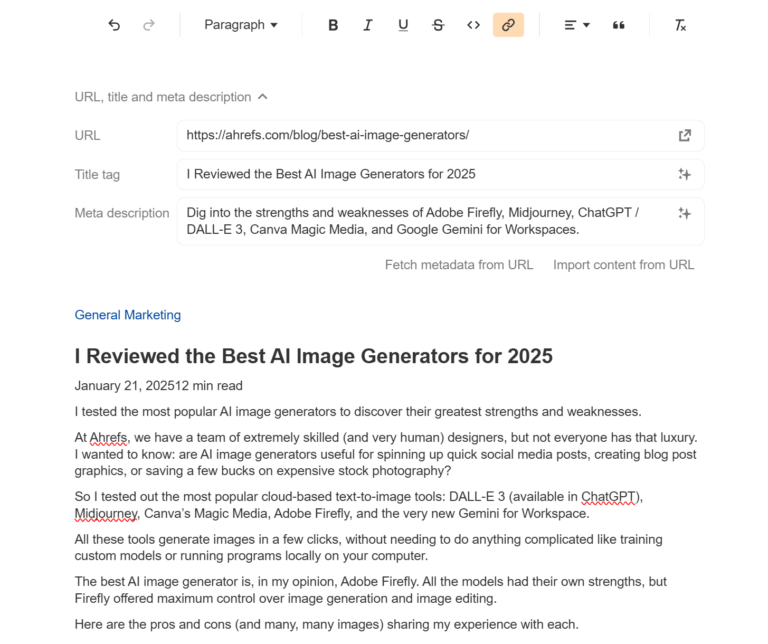
The Best AI Content Optimization Tools for 2025
Content optimization tools make writing and ranking top-quality content a whole lot easier. That goes double for the latest generation of AI-powered tools. Great optimization tools can identify missing topics and keywords, suggest and refine headers and titles, generate meta-data, and show tons of useful information about your competitors’ articles. If you aren’t using an…
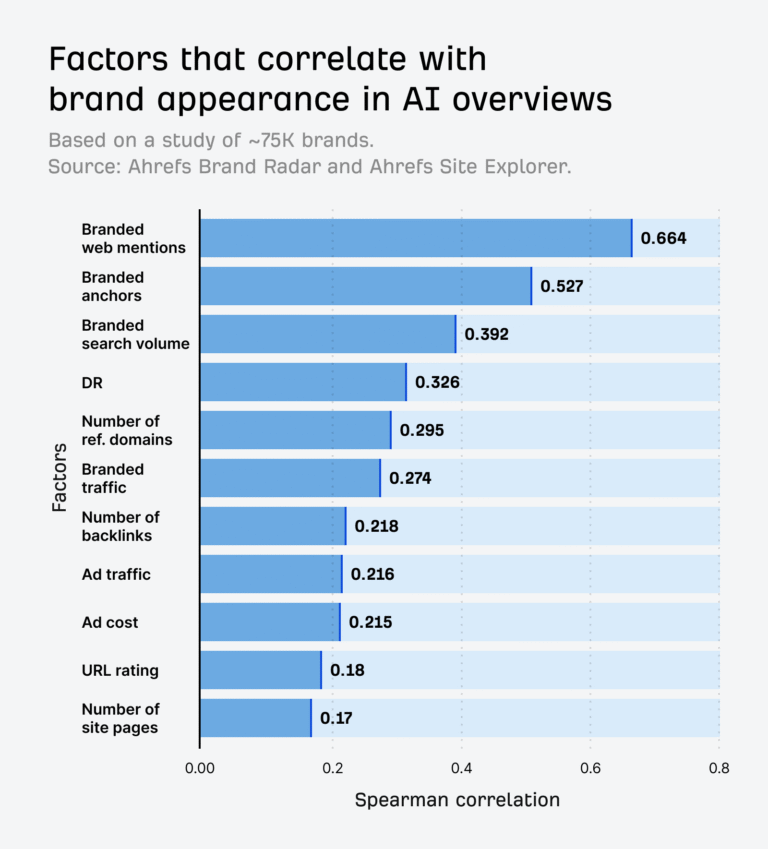
Google Seems More Biased Towards Big Brands Than ChatGPT and Perplexity
Article Performance Data from Ahrefs Linking websites The number of websites linking to this post. Get the week’s best marketing content Does being mentioned more on the web lead to more mentions in AI assistants? I’m defining mentions as the number of web pages that mention an entity at least once. I looked at the top…
3 New Videos: Learn How to Set Up OAuth, Get Tokens, and Make Authenticated Requests
If you’re creating applications that access Drupal’s data and need to act like a logged-in user, you’ll want to use OAuth for authentication. This process of setting up OAuth and understanding the flow of making authenticated HTTP requests can be a bit daunting. We’ve added videos to 3 tutorials that deal with this process: After…

Google AI Mode: All You Need to Know
Google announced AI Mode as a Labs experiment on 5 March 2025. Two months later, on 20 May 2025, Google rolled out AI Mode to everyone in the U.S. Just a couple of months later, Google went full steam ahead and rolled it out to India, later the UK, and now 180 more countries and territories….

The Top 5 Most Expensive Domain Names in 2024
Websites can sell for eye-watering sums. Hope you’re sitting down… Here, we reveal the most expensive domains and URLs and share top tips for buying and selling domains. Table of Contents The world’s most expensive domain names sell for truly eye-watering figures. It’s a given that owning a good domain name has heaps of advantages,…
